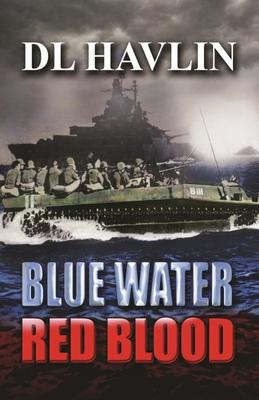Random events and coincidence fashion this story that sits on a knife's edge between historical fact and historical fiction. The novels subject: the development of a machine that saved thousands of Marines in WW II and the men who were responsible. Real lives of the historical protagonists and the events that shaped them, provide a study in leadership, and what power conviction and purpose provide for those who possess them.
The story shifts to WW I and to the early battle experience of protagonist Holland Smith, the man destined to command the Marines in their conquest of the Pacific Islands in WW II. He sees the horrors and futility of frontal attack and vows to spare troops he commands if he can.
Another kind of war, man's battle with nature, becomes the catalyst another man's quest. The killer hurricane of 1928 takes 2000 lives as it devastates the southern shore of Okeechobee. John Roebling, son of the Brooklyn Bridge's builder, uses the event to inspire his son Donald, our second protagonist, to develop a hurricane rescue machine and inject purpose into Don's life.
While Don labors developing a rescue vehicle, Smith, whose nickname is "Howlin' Mad," becomes part of the effort planning for a war with Japan that military planners are sure will occur. It becomes apparent that amphibious landings, the most lethal form of frontal assault will be unavoidable. Smith struggles to develop tactics and methods to spare as many Marines as possible from the slaughter he knows they'll eventually face. One need, getting better landing craft for the troops, caused conflict between him and Navy officials when they favored political friends when contracting for the "new boats." His zeal and strong opinions threaten his career.
World events such as the Rape of Nanking make it clear that war with Japan will be inevitable. Smith pioneers the tactics required to attack the islands controlled by the Japanese. His strongly held convictions and temper bump squarely into naval brass during the development his plans for landing on fortified beaches. Smith finds part of his solution to his landing craft problems when he's introduced to Andrew Higgins and he is instrumental in the adoption of the "Higgins Boat. "However, the reefs and obstacles his men will face in the Pacific means most of the problem still exists.
A Navy admiral's chance referencing of an article about the "Alligator," Roebling's rescue craft, to a Marine General, at a Christmas Party connects the loop. Roebling and Smith stage an epic battle against bureaucracy in an effort to get the craft ready for the coming war. The fight to get approval to utilize the LVT and to modify the vehicle for Marine use struggles to completion, but not without a potential casualty. It appears Smith will be denied command of the troops until Higgins and FDR become involved. The craft proves its indispensable value at Tarawa where Smith refuses to approve the landing until Alligators are available to at least part of his troops.
After the veteran Marine relives his part of the battle, the story returns to the present day and the man is able to resolve his emotions about the landings and the men who made his survival possible.
